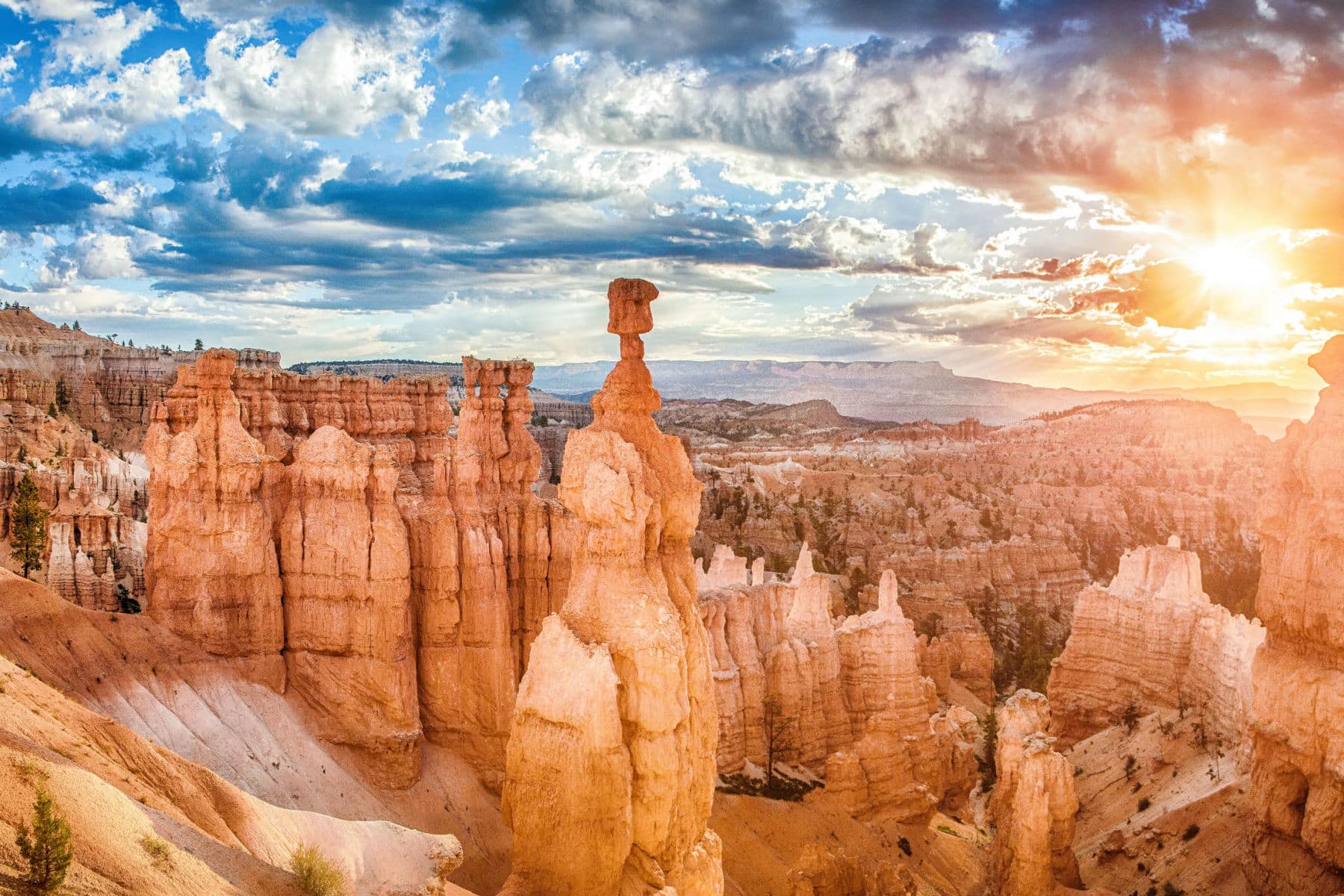
Article Summary: Bryce Canyon National Park Facts
Bryce Canyon Facts! In this article, we provide you with 15 amazing facts about one of America’s most magnificent national parks.
More Than Just Parks is your one-stop-shop when it comes to learning everything you’ll need to know about America’s national parks. We’ve got expert guides, beautiful photos, helpful tips, breathtaking films and so much more.
I’ve been to so many of these amazing places since retiring from teaching in 2018. Did I mention that I taught history? I spent a lifetime teaching about the history behind some of these natural wonders. Then I got to see them firsthand.
And now I’m sharing some of the incredible stories about these beautiful places with you. It doesn’t get any better than that!
More Than Just Parks takes a deeper dive with its national park facts. We’ve done our homework so that you’ll get more than you bargained for.
To get you excited about planning your next visit, in this article we’re covering 15 fascinating facts about Bryce Canyon National Park.
Without further ado, let’s dive in.
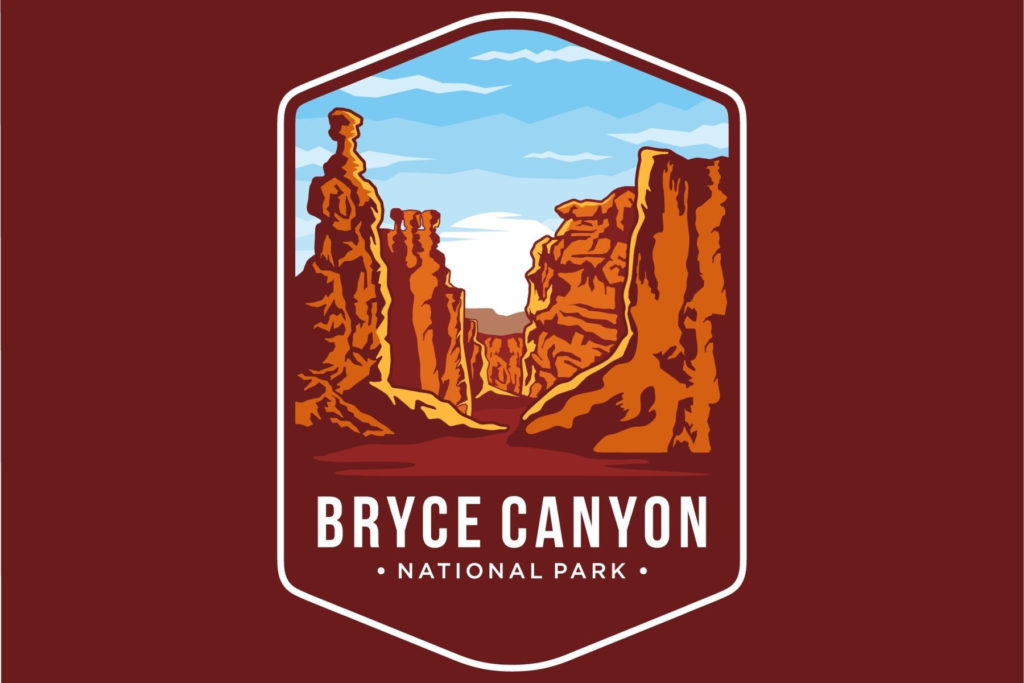
Table Of Contents: Bryce Canyon National Park Facts
Bryce Canyon National Park Facts
- Facts About Bryce Canyon National Park
- Bryce Canyon National Park Facts
- Top 5 Bryce Canyon National Park Facts
- Top 10 Bryce Canyon National Park Facts
- Top 15 Bryce Canyon National Park Facts
- 11. Bryce Canyon Is The Smallest National Park In Utah
- 12. Bryce Canyon Hosts A Diverse Group Of Wildlife Species
- 13. Bryce Canyon National Park Contains 1,000 Plant Species
- 14. You Can Enjoy Bryce Canyon Without Leaving Your Car
- 15. It’s Only 72 Miles From Bryce Canyon To Zion National Park
- Why Trust Us About Bryce Canyon National Park?
- Meet The Parks Brothers
- Map Of Bryce Canyon National Park
- We Hope You’ll Follow Our Journey
Facts About Bryce Canyon National Park
Some Basic Facts About Bryce Canyon National Park
Bryce Canyon National Park is a national park located in the state of Utah. The park covers an area of 35,835 acres and is known for its stunning views, unique geological formations, and diverse plant and animal life.
One of the main attractions of Bryce Canyon National Park is its stunning landscape, with towering red rock spires and pinnacles known as “hoodoos” and a variety of geological formations. The park is also home to a number of hiking trails, offering the opportunity to explore the park’s unique and varied terrain.
In addition to its natural beauty, Bryce Canyon National Park is also home to a number of cultural and historical sites, including the historic Bryce Canyon Lodge and the visitor center, which offers exhibits and programs about the park’s natural and cultural history.
Bryce Canyon National Park is a must-visit destination for nature lovers and outdoor enthusiasts, offering a unique and unforgettable experience in one of the most beautiful and unique landscapes in the United States.
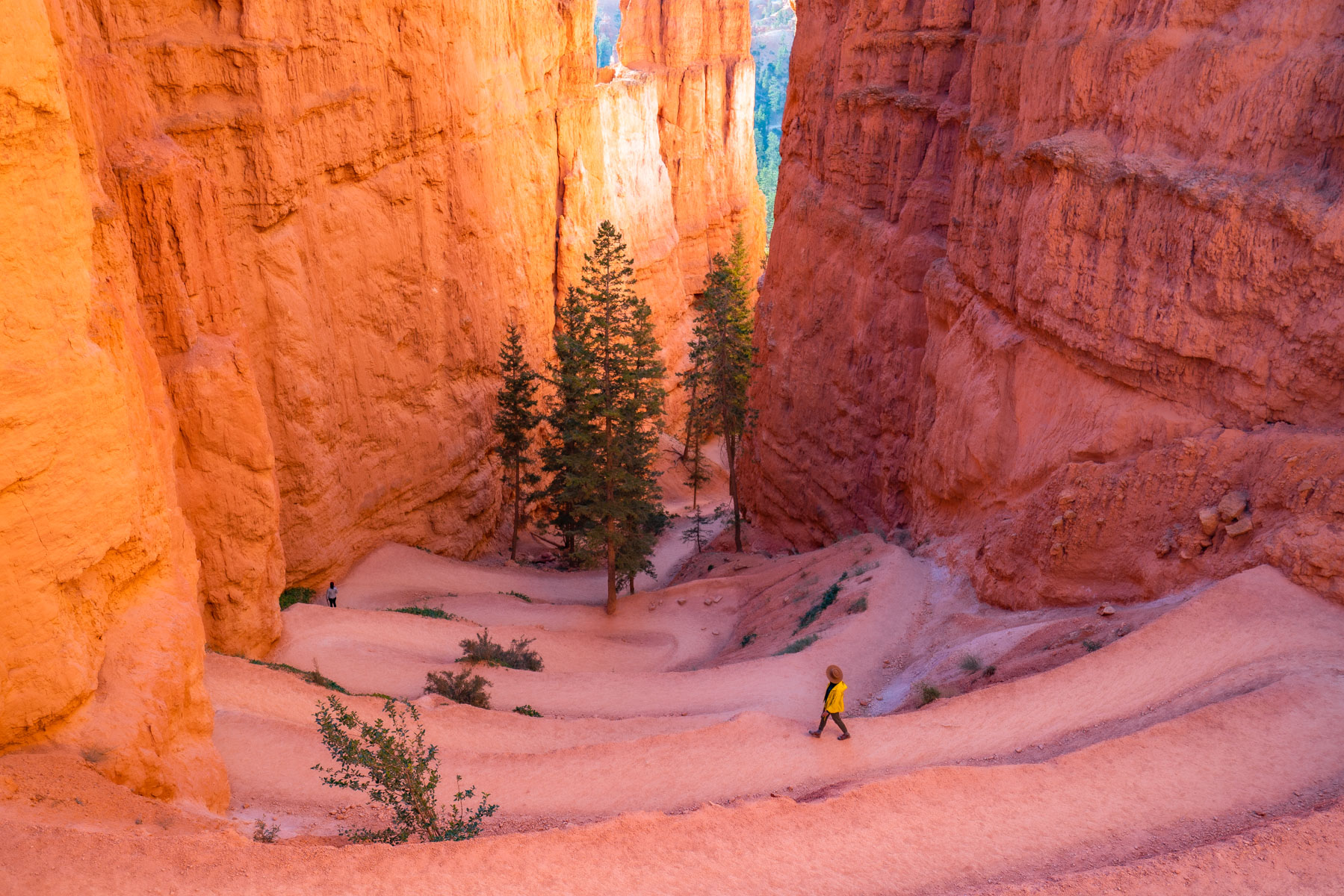
Here Are Some Of The Basic Facts
- Location: Utah
- Acreage: 35,835 acres
- Visitation: 2,679,478 recreational visits in 2018
- Highest Elevation: 9,100 feet Rainbow Point
- Lowest Elevation: 6,620 feet Yellow Creek
- When Did It Become A National Park? On June 7, 1924, Congress passed a bill to establish Utah National Park, when all land within the national monument would become the property of the United States. The land was acquired and the name was restored to Bryce Canyon. On February 25, 1928, Bryce Canyon officially became a national park.

Bryce Canyon National Park Facts
Top 5 Bryce Canyon National Park Facts
1. Paiute Indians Occupied The Area Around What Is Now Bryce Canyon Starting Around 1200 A.D.
One of the most interesting of the Bryce Canyon National Parks Facts involves its early origins. There were three groups of natives that are known to have been in the area of Bryce.
They were the Anasazi and Fremont and the Paiute. Due to its harsh winters, however, the Anasazi and Fremont were unlikely to have taken up permanent residence.
The Paiute Indians, however, did occupy the area around what is now Bryce Canyon starting around 1200 A.D.
While the Paunsaugunt Plateau was used for seasonal hunting and gathering activities there is no evidence of permanent settlements there.

Red Painted Rocks
Native Americans used to call the place “Angka-ku-wass-a-wits”, or “red-painted faces”.
According to a native superstition it was believed that if you looked closer at the hoodoos and rocks then you could see the faces of those who turned to stone.
According to the National Park Service, the legend of Bryce Canyon was explained to a park naturalist in 1936 by Indian Dick, a Paiute elder who then lived on the Kaibab Reservation:
“Before there were humans, the Legend People, To-when-an-ung-wa, lived in that place. There were many of them. For some reason the Legend People in that place were bad; they did something that was not good, perhaps a fight, perhaps some stole something….the tale is not clear at this point. Because they were bad, Coyote turned them all into rocks.
You can see them in that place now all turned into rocks; some standing in rows, some sitting down, some holding onto others. You can see their faces, with paint on them just as they were before they became rocks. The name of that place is Angka-ku-wass-a-wits (red painted faces). This is the story the people tell.” (Source: NPS)
CHECK OUT: 11 AMAZING Facts About Acadia National Park
2. Two Spanish Explorers Found Themselves Near Bryce Canyon
If you’re as intrigued by the Age of Discovery & Exploration as I am then here’s another of those Bryce Canyon National Park Facts which you’ll find particularly interesting.
In 1776, in an expedition directed by Franciscan Friars, two Spanish explorers, Silvestra Velez de Escalante and Francisco Atanasio Dominguez, found themselves near the Bryce Canyon area along what is now the Arizona border.
These explorers were among the first to experience the beauty of Bryce Canyon’s pink cliff sides and incredible red rock.
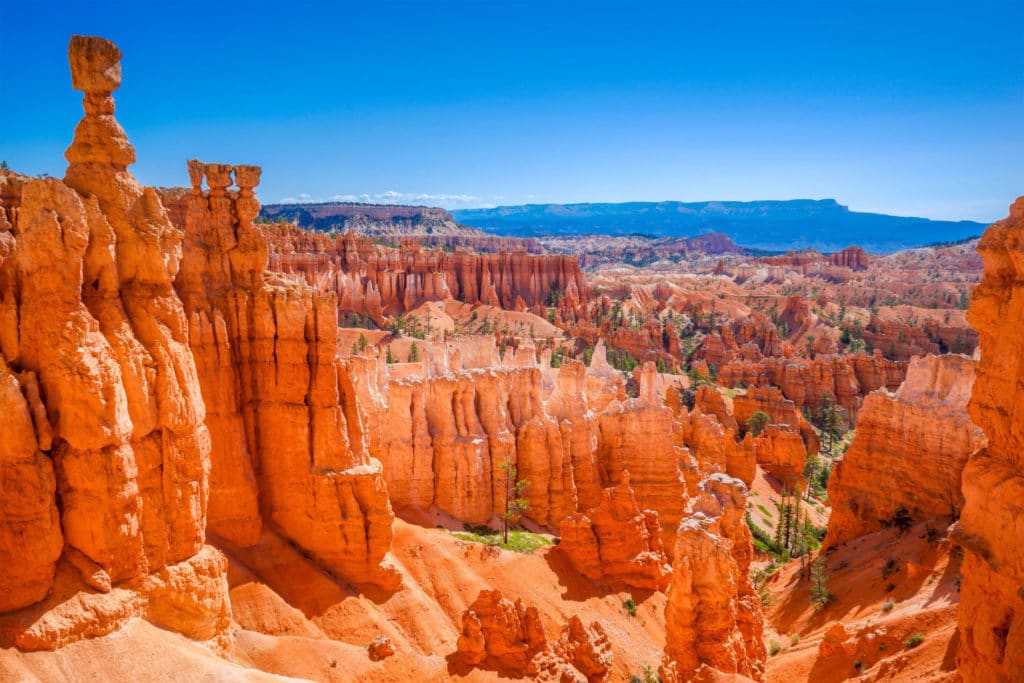
3. Bryce Canyon Was Discovered By John Wesley Powell
In 1872, U.S. Army Major John Wesley Powell and his expedition explored the area.
Just who was this John Wesley Powell you might ask?

John Wesley Powell
John Wesley Powell remains one of the most legendary characters to pass through the pages of history.
Powell was an adventurer from a very early age. At 21, he walked across the state of Wisconsin. The next year, he rowed the entire Mississippi River. Later he made trips down the Ohio and Illinois Rivers.
Even before his historic, early whitewater run through the entire Grand Canyon, Powell had already led a full life.
During the Civil War, he commanded a Union artillery regiment and lost his right arm after being wounded in the Battle of Shiloh.
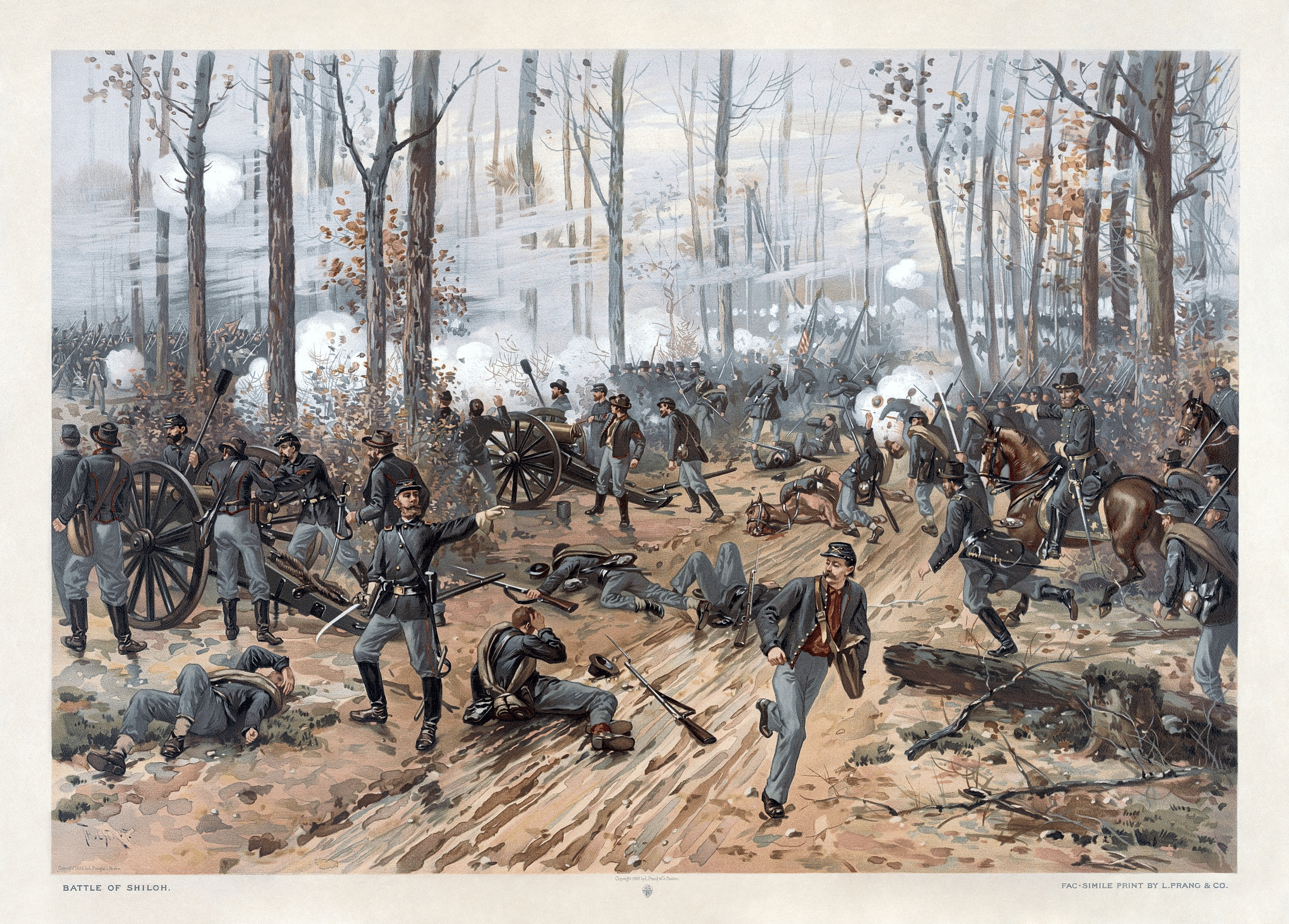
The Powell Expedition
On May 24, 1869, Powell began a journey for the ages as he led a company of men down the Green and Colorado rivers from Green River, Wyoming to St. Thomas, Nevada.
Powell was accompanied by 9 men in four wooden boats. He led the expedition through the Grand Canyon and over punishing rapids that many would hesitate to run today with modern rafts.
On the first trip, in 1869, his men suffered through perilous rapids, losing an entire boat and a third of their supplies, rotten food, fires in camp, and fist-fights among the men.
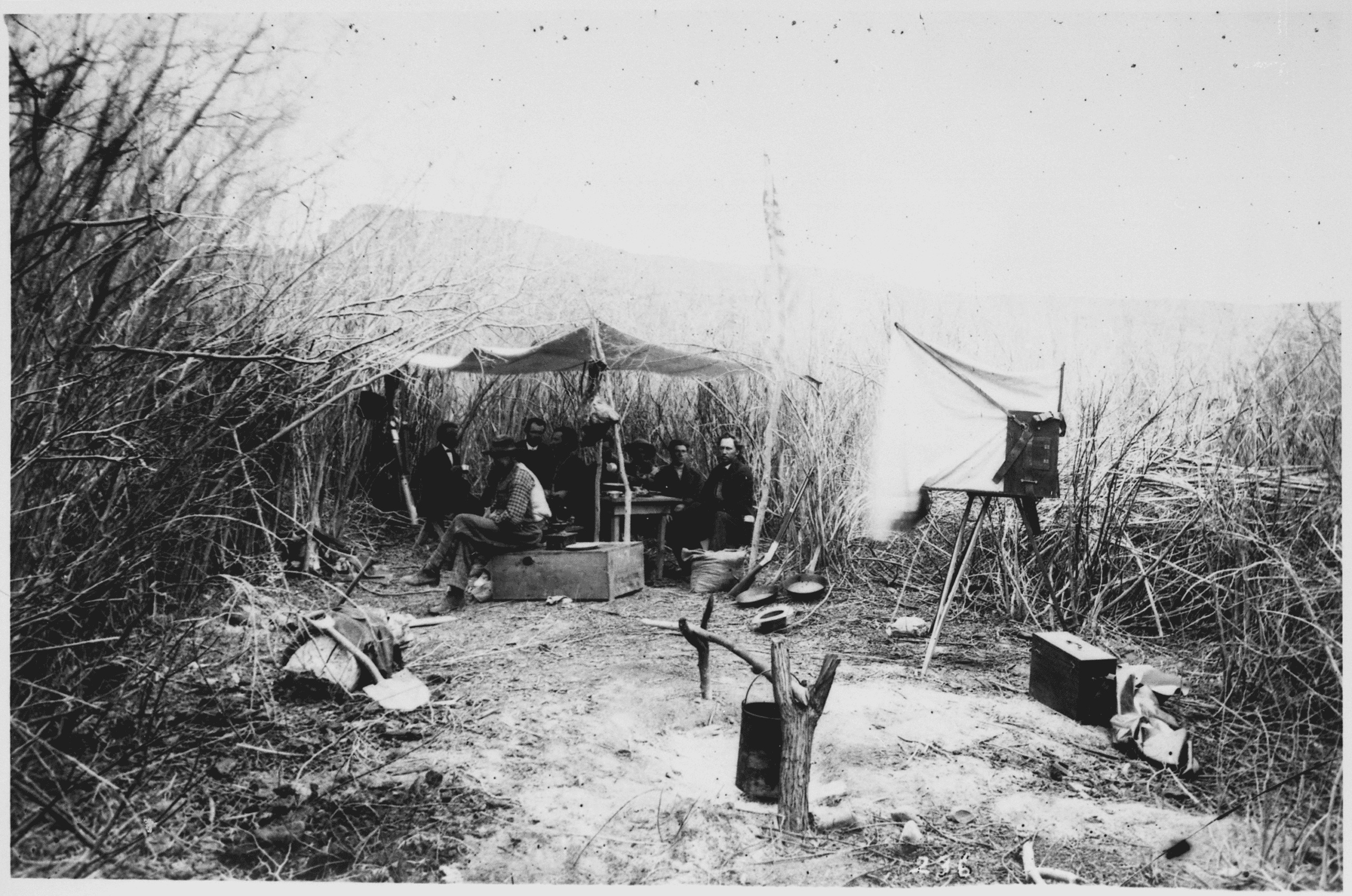
Separation Canyon
On August 27, the group reached a place that Powell would later name Separation Canyon.
Of the ten men that started out from Green River Station, six completed the entire journey. Frank Goodman left the expedition on July 6 during the resupply at the Uinta River Indian Agency, claiming he’d had more than enough adventure. He walked away and lived for some years with the Paiutes of eastern Utah.
Now Oramel Howland, the man tasked with mapping the river, begged Powell to call it quits. Howland proposed a massive climb to the rim and then a 75-mile hike to the nearest Mormon settlement.
Powell refused to go, but Howland managed to convince his younger brother, Seneca, and William H. Dunn that the danger was too great. These three men feared they could not survive the dangers of the river much longer.
They attempted to hike out of the Canyon, but were never seen again. According to one theory, the three men allegedly encountered a war party of Shivwit Indians and were killed.
No one knows for sure what happened to them, however, as their bodies were never recovered.
Powell, however, successfully completed his journey though the Grand Canyon and the Colorado River becoming the first person to do so.
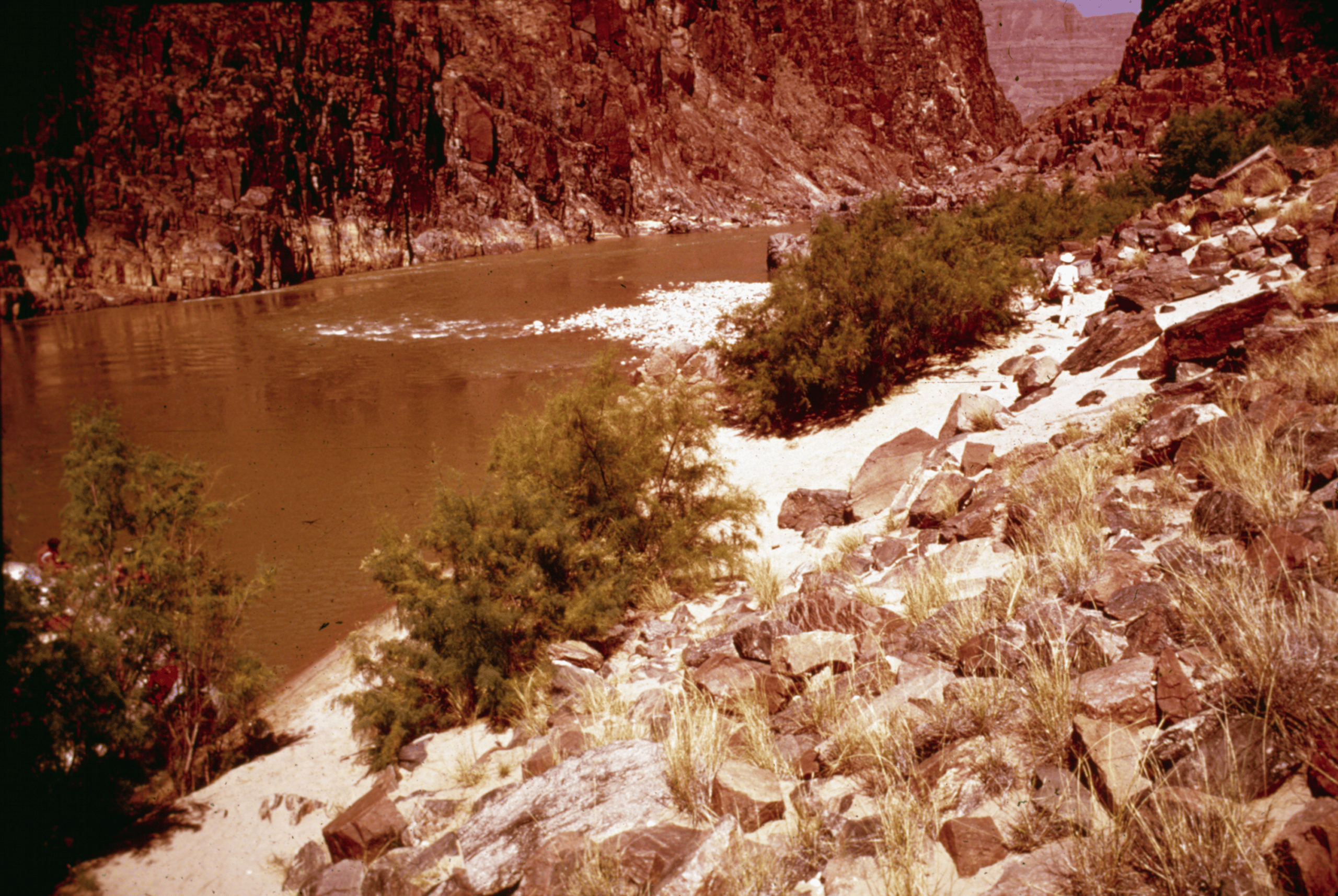
CHECK OUT: 16+ FASCINATING Grand Canyon Facts
4. Bryce Canyon Was Named After A Mormon Pioneer
Just when you thought we couldn’t come up with any more unbelievable Bryce Canyon National Park Facts we’ve come up with another one. In researching Bryce Canyon, I was fascinated to learn that Mormon pioneers spent long, lonely summers tending sheep and cows there long before it became a national park.
One of those Mormon pioneers was a man named Ebenezer Bryce. He homesteaded in the area in 1874
Bryce and his family settled and helped build the first church in the area near Bryce Canyon in 1875.
He also constructed a logging road in the Bryce Amphitheater.
Local people commonly referred to this road as “Bryce’s Canyon.”

CHECK OUT: 11 AMAZING Facts About Arches National Park
5. Bryce Canyon Is Technically Not A Canyon
What is in a name? Well here’s one of the most unusual of the Bryce Canyon National Park Facts. Bryce Canyon is not technically a canyon.
Rather it’s a series of about a dozen natural amphitheaters, eroded into an escarpment of the Paunsaugunt Plateau.
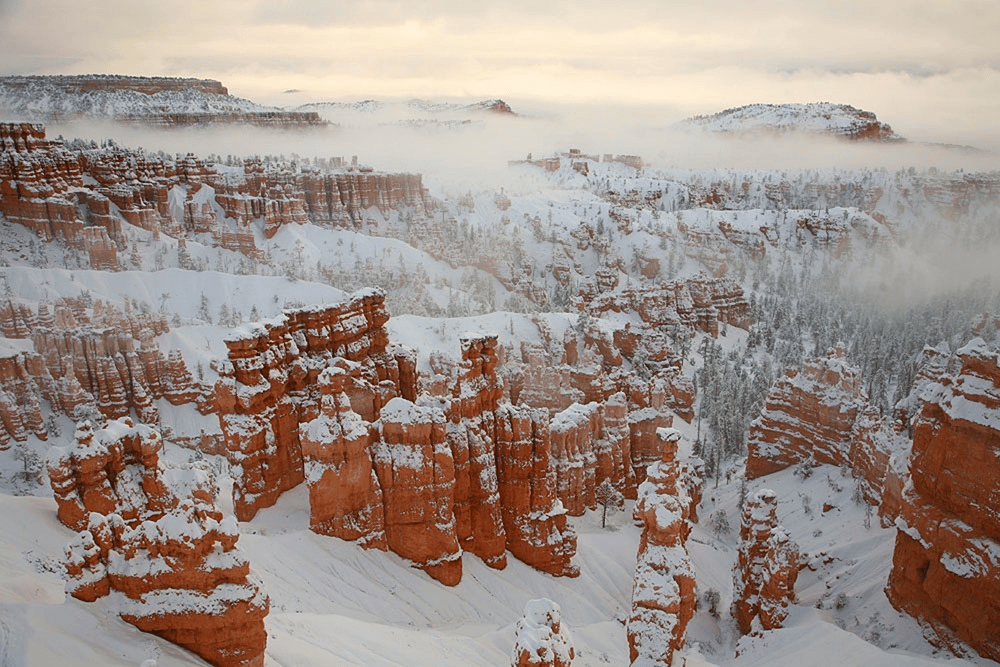
CHECK OUT: 12 AMAZING Facts About Big Bend National Park
Top 10 Bryce Canyon National Park Facts
6. The Park Is Well Known For Its Hoodoos
When it comes to geologic wonders, Bryce Canyon has the world’s largest collection of a specific rock formation called hoodoos.
A hoodoo is a column of weathered and unusually shaped rock.

These are rock spires that formed due to erosion caused by rainwater. Thousands of years of this action has created a stunning maze-like formation of multi-colored wonder.
The hoodoos at Bryce Canyon are carved in the Claron Formation. Limestone, siltstone, dolomite and mudstone make up the four different rock types that form the Claron Formation.
Each rock type erodes at different rates. The rock’s resistance to erosion is what causes the undulating shapes of the hoodoos.

7. Popular Films Have Been Shot In Bryce Canon
If you’re looking for one of the truly remarkable Bryce Canyon National Park Facts then consider the fact that Bryce Canyon National Park and its surrounding areas are so unique that film producers simply can’t stay away.
Throughout its more recent history, this hoodoo-filled area has been a movie hot spot.
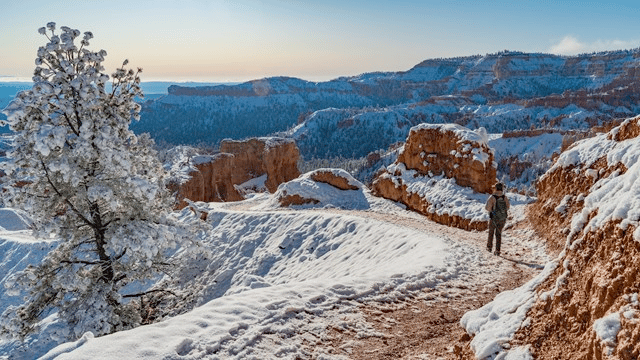
Films that have been made in Bryce Canyon include the following:
- The Deadwood Coach (1924) which was Hollywood’s first production in Utah. It was filmed in Cedar City, Zion National Park, and Bryce Canyon National Park.
- Bonneville (2006) which is the story of three women who decide to honor the last request of one of the woman’s recently-deceased husbands to scatter his ashes at places they visited throughout their twenty-year-long marriage. Along the way, the women visit Bryce Canyon National Park and Lake Powell among other Utah sites.
- Thunderhead-Son Of Flicka (1945) which was the sequel to the popular film My Friend Flicka. It’s the story of a boy who tries to train Thunderhead to be a champion racehorse. Filming many outdoor western scenes with Bryce Canyon National Park as the backdrop.
- Sergeants 3 (1962) which you likely never heard of, but I’ll bet you’ve heard of some of the people who starred in it–classic actors such as Frank Sinatra and Dean Martin. Based in 1870, this motion picture is about three brawling U.S. Cavalry sergeants stationed in Indian Territory. Bryce Canyon is the great western scenery, as the characters Mike and Chip strive to prevent Larry from fulfilling his decision to leave the Army and marry his love, Amelia Parent.
- Outlaw Trail: The Treasure Of Butch Cassidy (2006) is loosely based on the legends of Butch Cassidy. Three boy scouts, one a great-nephew of Butch Cassidy, and a girlfriend hunt for the famous outlaw’s lost treasure in Utah. Bryce Canyon National Park along with multiple other Utah locations was used in the filming process. (Source: Utah’s Bryce Canyon Country)
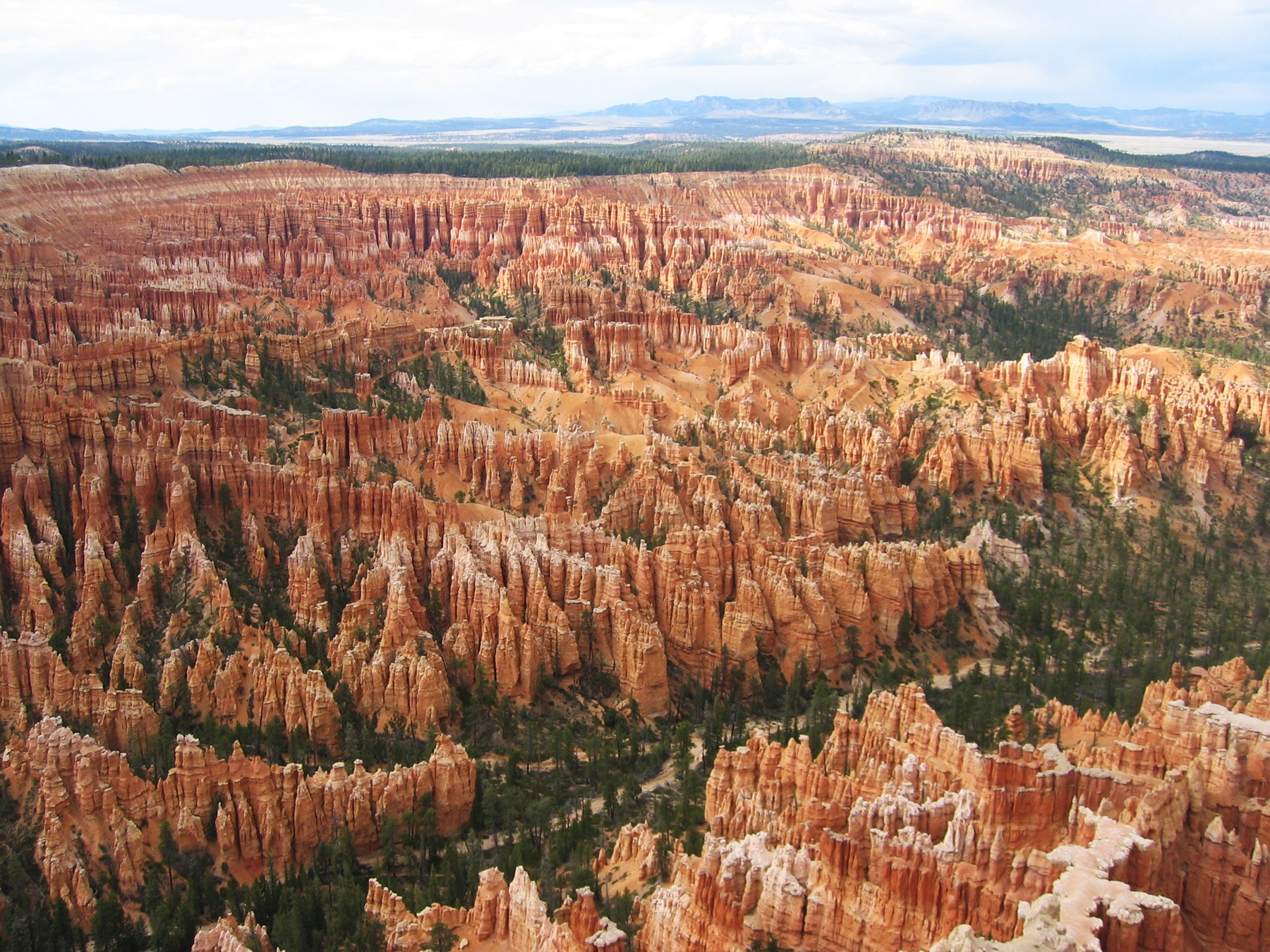
CHECK OUT: Look Familiar? 25+ CLASSIC Movies Filmed In The National Parks
8. Bryce Canyon Hosts An Astronomy Festival
The park hosts the Bryce Canyon Astronomy Festival, usually in June.
Visitors often flock to the park to participate in the various programs and activities the park holds in partnership with local astronomical societies and the park’s own Astronomy Rangers.
As a matter of fact, Bryce Canyon is a great place for stargazers. If you look up at the sky after sundown you’re likely to see 7,500 stars (on a clear night). As a matter of fact, the park has the longest running Night Sky program in the National Parks.
That’s more stars than you’ll see in Hollywood.
9. You Can Find “Thor’s Hammer” At Bryce Canyon
Another of the extraordinary Bryce Canyon National Park Facts involves Thor’s Hammer. It’s named for the Norse God of Thunder who controlled the air and storms, is probably the best-known hoodoo in Bryce Canyon National Park, and is also the icon for the Utah Geological Survey logo.
If you’re interested in seeing this amazing geologic formation, the summer months, with all of the lightning and thunderstorms, may the best time to experience the full effect.
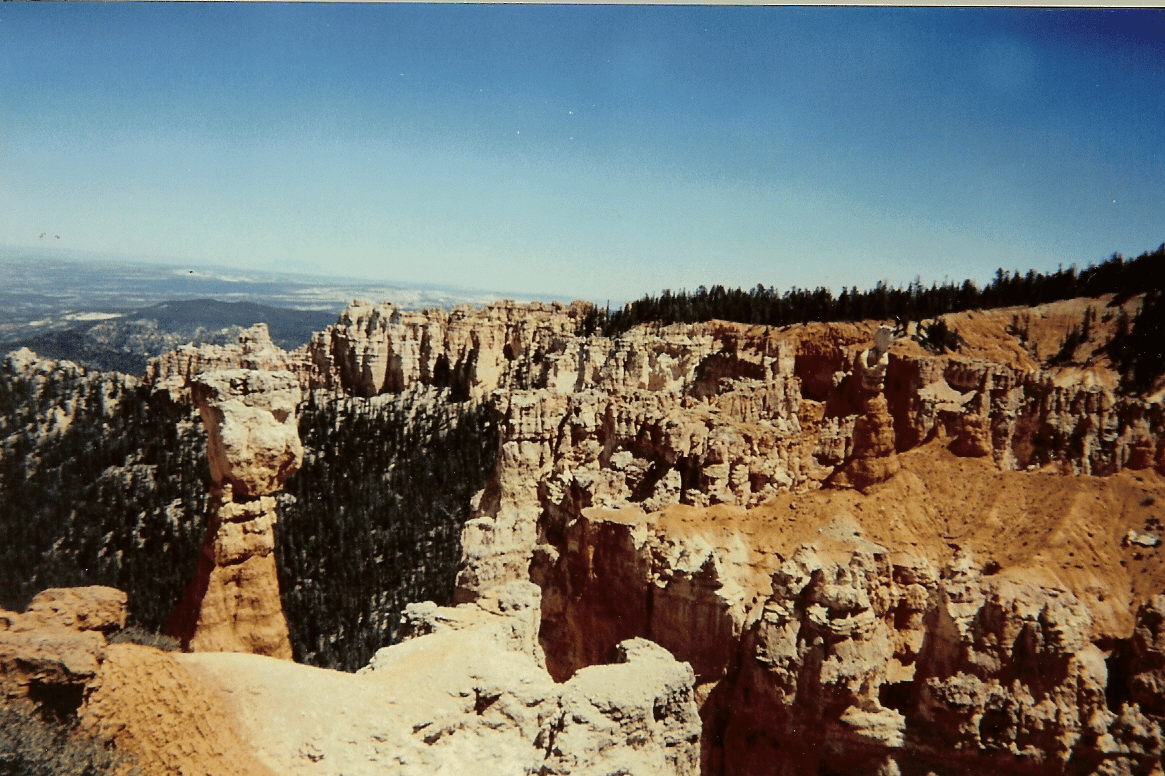
10. The Hoodoos Were Once Human–Or Were They?
One of the most unique geologic features of Bryce Canyon makes for one of the most intriguing of the Bryce Canyon National Park Facts.
According to Native American legend, the hoodoos were once human. They were known as To-when-an-ung-wa or Legend People who are actually birds, lizards, or animals.
They were supposedly bad and were punished by Coyote, the god of mischief, who turned them into rocks.
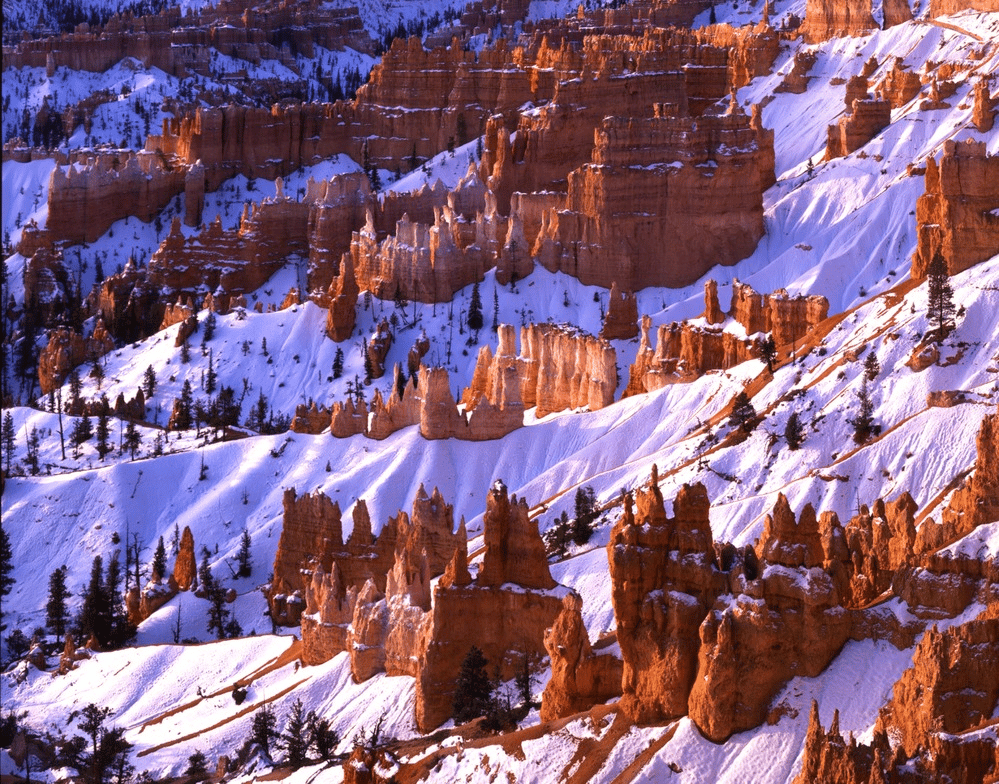
Top 15 Bryce Canyon National Park Facts
11. Bryce Canyon Is The Smallest National Park In Utah
If size truly matters then here’s another of those Bryce Canyon National Park Facts that you’ll enjoy. Utah boasts five national parks (Arches, Bryce Canyon, Canyonlands, Capitol Reef & Zion).
Of these five national parks, Bryce Canyon is the smallest.
It is also the 12th smallest national park in the U.S.

CHECK OUT: 14 MIGHTY Utah National Parks & Monuments To Visit
12. Bryce Canyon Hosts A Diverse Group Of Wildlife Species
There are approximately 60 species of mammal and 175 species of birds that live inside Bryce Canyon National Park.
Three of these species are included in the U.S. Fish and Wildlife List of Threatened and Endangered Species.
This includes endangered species such as the California Condor, Utah Prairie Dog and Willow Flycatcher.
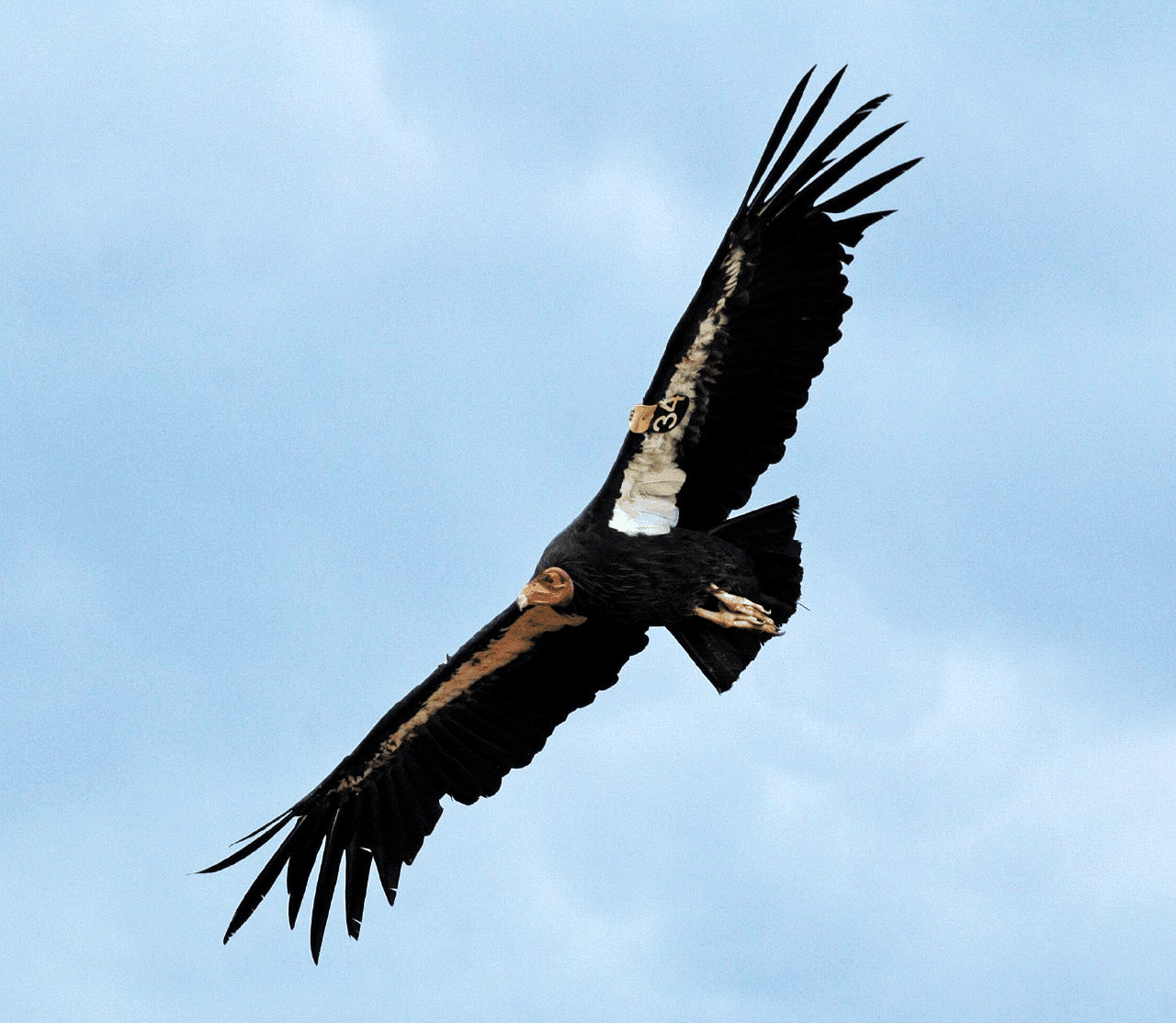
13. Bryce Canyon National Park Contains 1,000 Plant Species
As someone who enjoys seeing wildlife and plant life, I found one of the most interesting Bryce Canyon National Park Facts to be that, In addition to some amazing wildlife, it contains 1,000 different plant species.
A majority of the park’s wildflowers are located along trails where they’ve adapted to the park’s rocky soil.
And let’s not forget about the butterflies either. There have been 60 species of butterflies documented inside of the park.
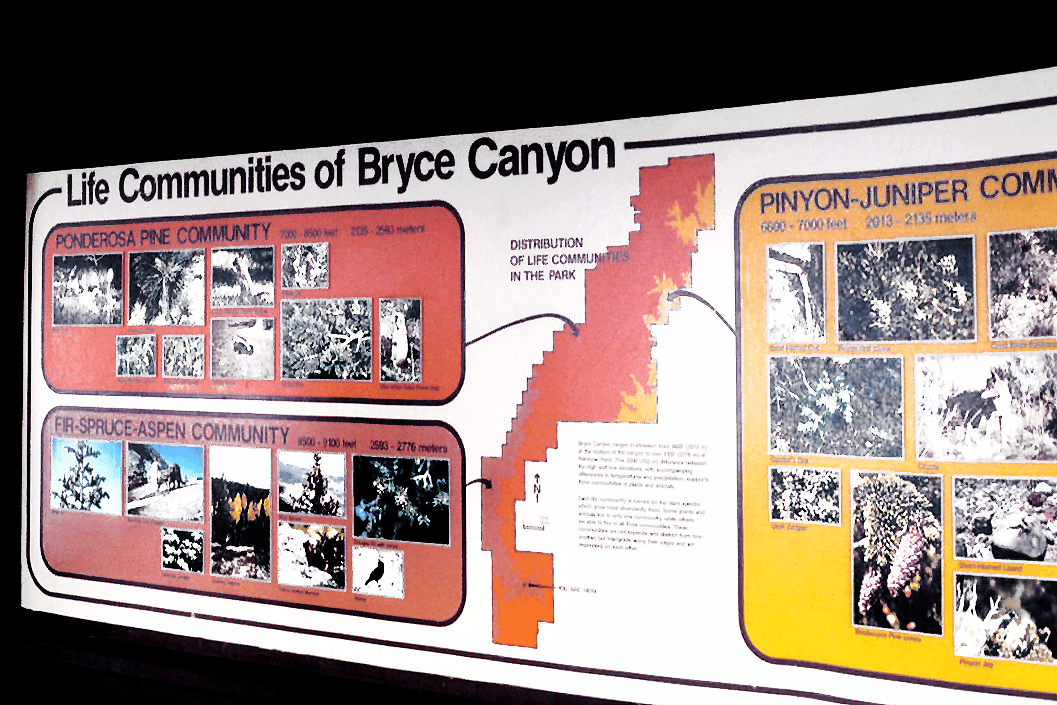
14. You Can Enjoy Bryce Canyon Without Leaving Your Car
If you’re someone who enjoys being surrounded by nature, but doesn’t like to break a sweat then you may find this one of the most satisfying of our list of Bryce Canyon National Park Facts.
Bryce Canyon can be enjoyed without leaving your car.
The Scenic Drive consists of a 38-mile round-trip drive that lets visitors access 13 viewpoints along the popular route. The drive lasts about 2 hours to about half a day.
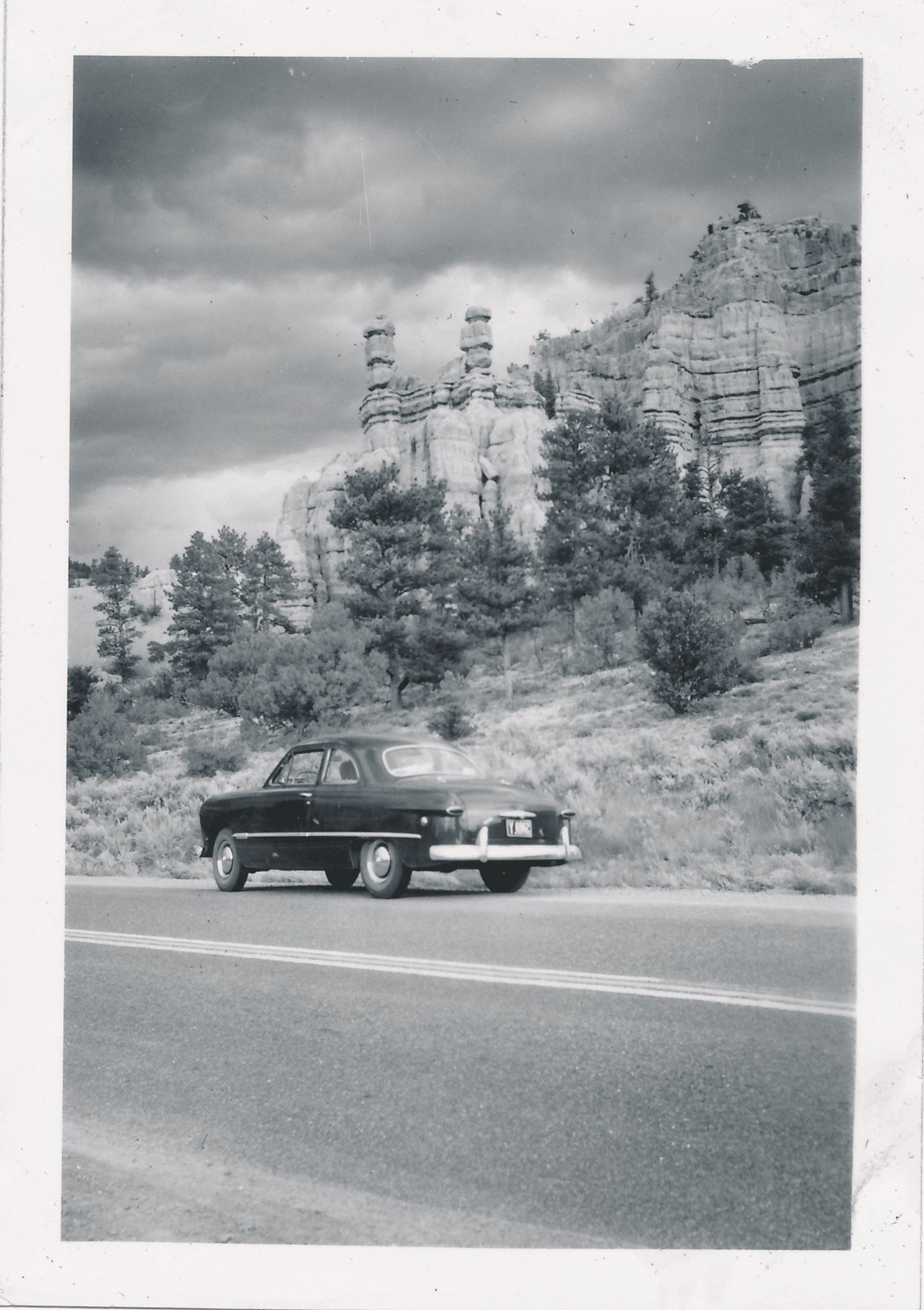
15. It’s Only 72 Miles From Bryce Canyon To Zion National Park
Why stop with one national park when a second one is only 72 miles away? That’s right! It’s only about an hour and a half drive. Both parks will take longer than that to explore properly, but why stop with one when a second is so close?
And I hope that you’ve enjoyed our list of some truly fascinating Bryce Canyon National Park Facts.
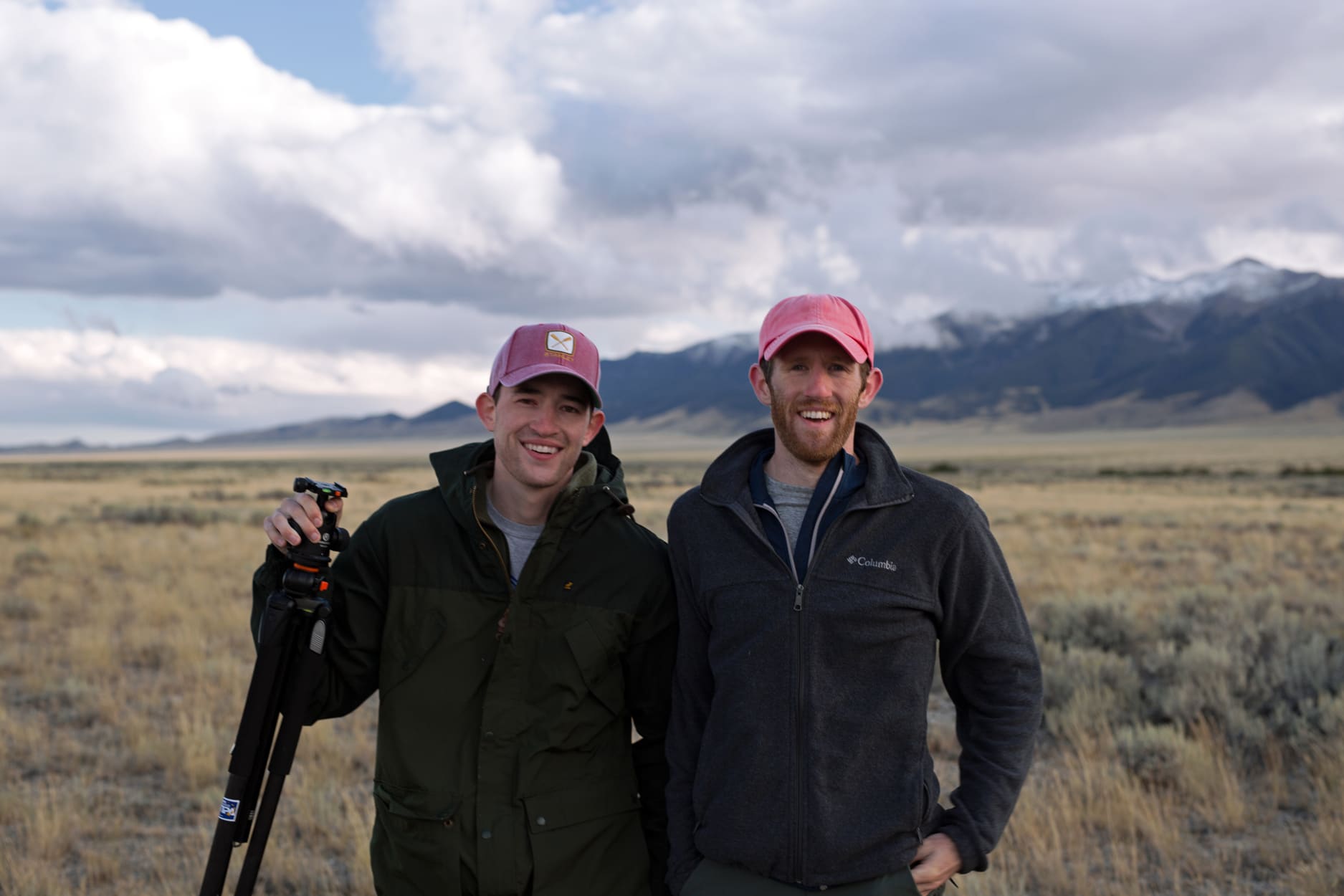
Why Trust Us About Bryce Canyon National Park?
We’re Jim Pattiz and Will Pattiz, collectively known as the Pattiz Brothers (and sometimes the Parks Brothers) and we absolutely LOVE the national parks.
You should probably know that we don’t just make this stuff up out of thin air. We’ve spent our entire adult lives exploring and filming America’s national parks and public lands.
We’ve worked with the National Park Service, the Department of Interior, USDA, and the U.S. Forest Service for years creating films on important places and issues. Our work has been featured in leading publications all over the world and even some people outside of our immediate family call us experts on the national parks.

Meet The Parks Brothers
Map Of Bryce Canyon National Park
List Of Bryce Canyon National Park Facts
- Paiute Indians Occupied The Area Around What Is Now Bryce Canyon Starting Around 1200 A.D.
- Two Spanish Explorers Found Themselves Near Bryce Canyon
- Bryce Canyon Was Discovered By John Wesley Powell
- Bryce Canyon Was Named After A Mormon Pioneer
- Bryce Canyon Is Technically Not A Canyon
- The Park Is Well Known For Its Hoodoos
- Popular Films Have Been Shot In Bryce Canon
- Bryce Canyon Hosts An Astronomy Festival
- You Can Find “Thor’s Hammer” At Bryce Canyon
- The Hoodoos Were Once Human–Or Were They?
- Bryce Canyon Is The Smallest National Park In Utah
- Bryce Canyon Hosts A Diverse Group Of Wildlife Species
- Bryce Canyon National Park Contains 1,000 Plant Species
- You Can Enjoy Bryce Canyon Without Leaving Your Car
- It’s Only 72 Miles From Bryce Canyon To Zion National Park
We Hope You’ll Follow Our Journey

Our goal here at More Than Just Parks is to share the beauty of America’s national parks and public lands through stunning short films in an effort to get Americans and the world to see the true value in land conservation.
We hope you’ll follow our journey through the parks and help us to keep them the incredible places that they are. If you’re interested joining the adventure, sign up below!
Helpful Related Articles
Things to Do Bryce Canyon: 20 Epic Things to Do in Bryce Canyon National Park
Things to Do Capitol Reef: 15 Best Things to Do in Capitol Reef National Park
Road Trip Essentials: 35+ ROAD TRIP ESSENTIALS (You’ll Love + Packing List)
Road Trip Planning Tools: 15 BEST FREE ROAD TRIP PLANNING Tools (& Apps) 2022
Zion National Park Guide: Ultimate Guide to Zion National Park
Things to Do in Zion: 18 EPIC Things to Do in Zion National Park
Best Hikes in Zion: 16 EPIC Hikes in Zion National Park
Things to Do in Arches: 16 EPIC Things to Do in Arches National Park
Utah’s Manti-La Sal National Forest: Manti-La Sal National Forest: The Forest As Beautiful as Utah’s Parks
Utah National Parks Guide: 5 MIGHTY Utah National Parks Guide
Utah National Parks Road Trips: 5 Best Utah National Park Road Trips
National Parks Rankings: ALL 63 US National Parks Ranked By Experts
Most Visited National Parks: Top 10 Most Visited National Parks
Least Visited National Parks: Top 10 Least Visited National Parks
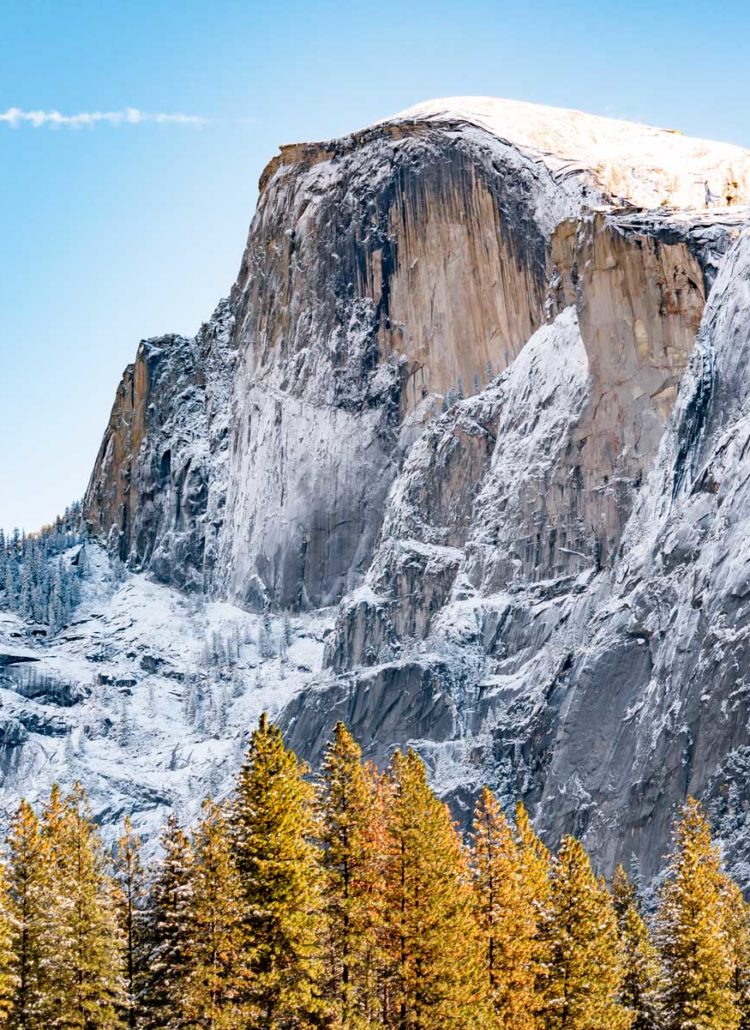
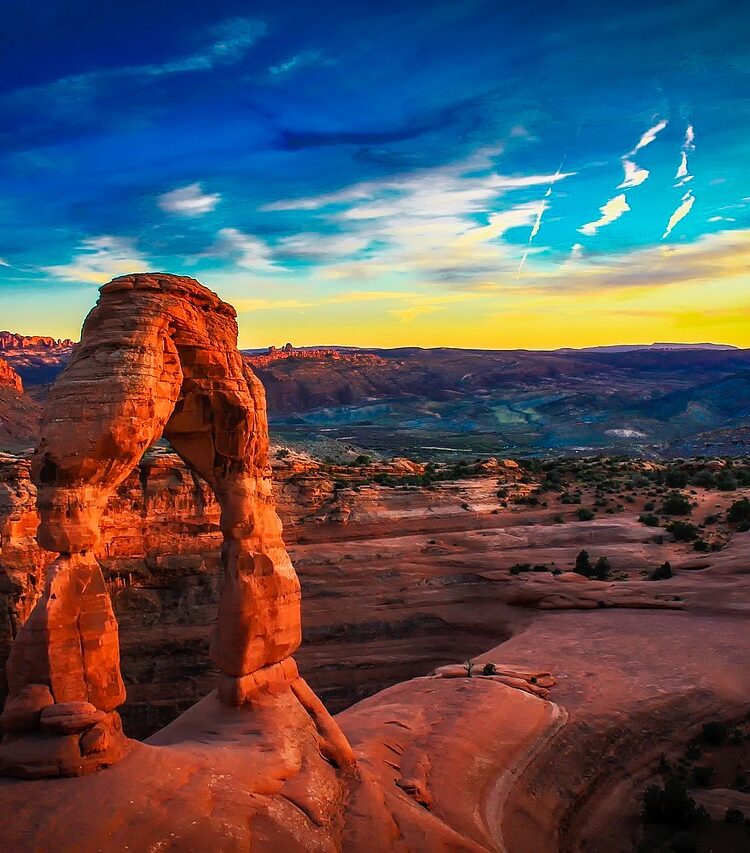
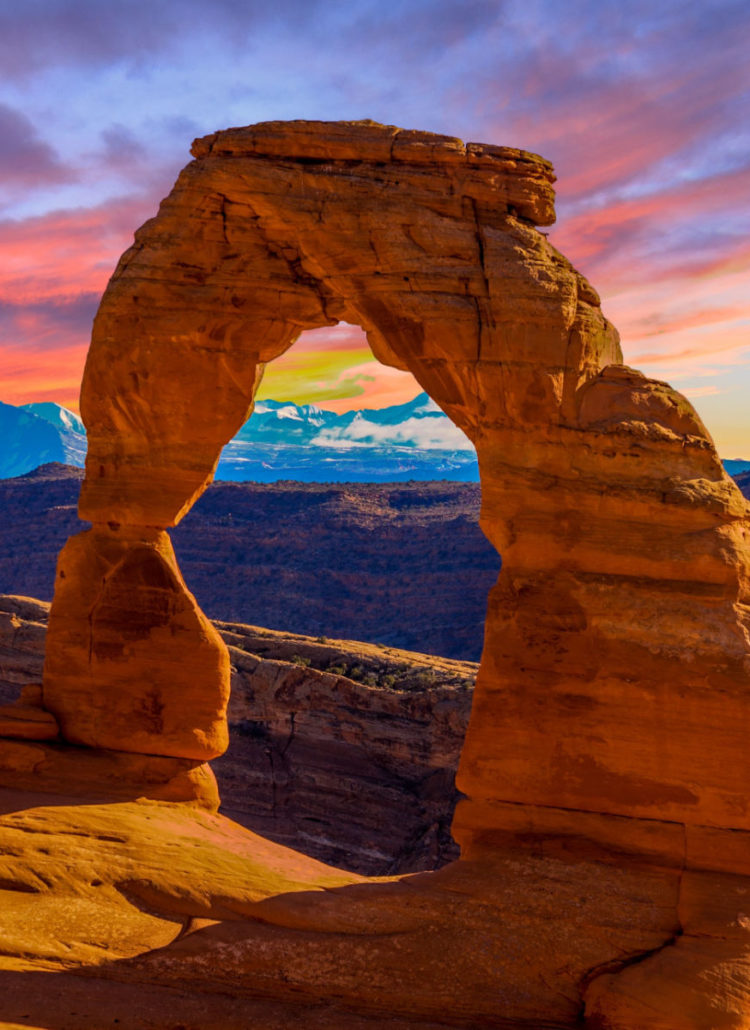
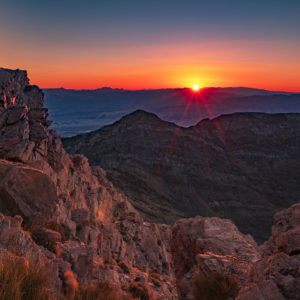

Leave a Reply